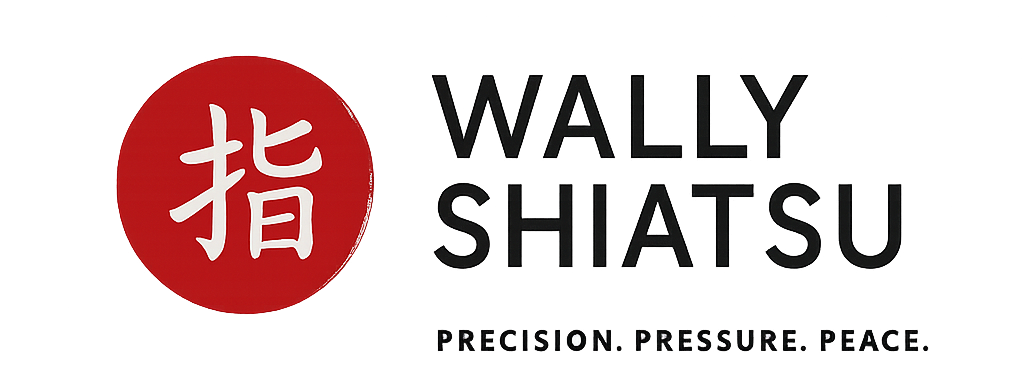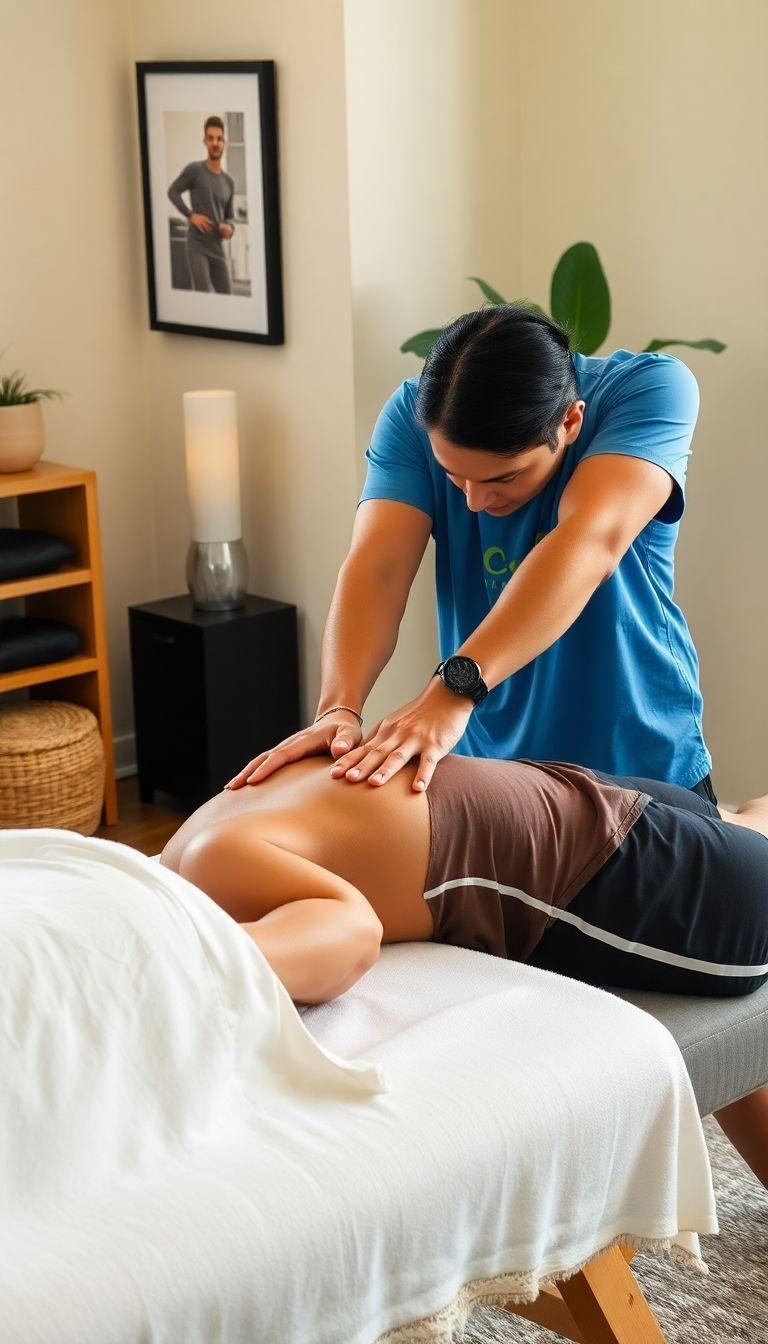Understanding the Role of Massage Therapy in Post-Surgery Rehabilitation
Benefits of Massage Therapy Recovery
Massage therapy plays a vital role in post-surgery rehabilitation recovery. It helps the body heal and recover more effectively. Here are some key benefits:
- Improved circulation: Massage boosts blood flow, delivering more oxygen and nutrients to healing tissues. This is essential for a speedy recovery, as highlighted in the incredible benefits of massage therapy.
- Reduced swelling: It helps reduce inflammation and swelling, making recovery more comfortable.
- Relaxation: Massage promotes relaxation, easing stress and anxiety during recovery, which is crucial for overall well-being as discussed in the power of relaxation.
- Enhanced mobility: Regular sessions improve flexibility and range of motion, helping patients regain strength.
Pain Relief Massage After Surgery
Pain relief is one of the primary goals after surgery. Massage therapy provides an effective way to manage discomfort.
How Massage Therapy Aids in Reducing Pain
Massage therapy can help reduce pain through various mechanisms:
- Release of endorphins: These natural painkillers can be released during massage, providing relief.
- Muscle relaxation: Massage helps relax tense muscles, alleviating pain and discomfort.
- Breaking down scar tissue: Gentle manipulation of tissues can help break down scar tissue, reducing stiffness and pain.
| Mechanism | Description |
|---|---|
| Release of endorphins | Natural pain relief through the body’s own chemicals |
| Muscle relaxation | Eases tension and discomfort in muscles |
| Breaking down scar tissue | Improves flexibility and reduces pain |
In summary, the role of massage therapy in post-surgery rehabilitation recovery cannot be understated. It offers a range of benefits that support healing, reduce pain, and improve overall well-being.
Key Massage Techniques for Surgical Recovery
Techniques for Improving Mobility Post-Surgery
After surgery, mobility can feel like a distant dream. Massage therapy plays a vital role in helping individuals regain their freedom of movement. Techniques such as Swedish massage and myofascial release significantly aid in recovery, as explored in the main types of massage.
- Swedish Massage: This technique uses long, flowing strokes to promote relaxation and improve circulation, essential for healing.
- Myofascial Release: By applying gentle pressure to the connective tissue, this method helps release tension and improve flexibility.
These approaches help the body return to its natural state, allowing individuals to move with more ease and less discomfort.
Scar Tissue Treatment Massage
Scar tissue can be a challenging aspect of recovery. Massage therapy can help manage and soften these areas, promoting better healing.
Effective Techniques for Scar Tissue Management
- Cross-Fiber Friction: This technique involves moving across the scar tissue to break down adhesions, promoting better blood flow and reducing pain.
- Gentle Stretching: Incorporating gentle stretches can improve the elasticity of scar tissue, making movement easier.
- Deep Tissue Massage: This method targets deeper layers of muscle and connective tissue, alleviating tightness around the scar.
Using these techniques, massage therapists play a key role in improving the overall recovery experience.
The Importance of Holistic Recovery Strategies Post-Surgery
Combining Massage with Other Therapies
Massage therapy is crucial in post-surgery rehabilitation recovery. When paired with other treatments, it can significantly boost healing. For example, combining massage with physical therapy often leads to improved mobility and reduced pain. This combination works well because:
- Massage relaxes muscles and eases tension.
- Physical therapy strengthens muscles and restores movement.
By integrating these therapies, patients can experience a more comprehensive recovery. Each therapy complements the other, creating a harmonious balance that promotes healing.
Emotional Benefits of Massage in Recovery
The emotional aspect of recovery is just as important as the physical side. Massage therapy helps patients feel more relaxed and less anxious. The gentle touch of a skilled therapist provides comfort during a challenging recovery period.
Here are some emotional benefits of massage:
- Reduces stress: Massage lowers cortisol levels, calming the mind.
- Boosts mood: It increases serotonin and dopamine production, enhancing feelings of happiness.
- Promotes connection: The therapist-patient relationship fosters trust and support.
These emotional benefits are vital, encouraging patients to stay positive and engaged in their recovery journey.
How Holistic Approaches Enhance Overall Healing
Holistic recovery strategies focus on the whole person, not just the injury. This approach recognizes that physical, emotional, and mental health are interconnected. When patients adopt holistic methods, they often see better results.
Here’s how holistic approaches can enhance healing:
| Aspect | Benefit |
|---|---|
| Physical | Improves circulation and reduces pain |
| Emotional | Alleviates anxiety and boosts mood |
| Mental | Encourages a positive mindset and resilience |
By addressing all aspects of recovery, patients can experience a smoother healing process. This comprehensive approach aids in physical recovery and nurtures emotional well-being.
Comparing Physical Therapy and Massage Therapy
Differences Between Physical Therapy and Massage Therapy
Physical therapy and massage therapy serve distinct purposes in health and recovery. Physical therapy focuses on rehabilitation from injuries or surgeries, helping individuals regain strength and mobility through exercises and specialized techniques. In contrast, massage therapy primarily aims at relieving muscle tension, reducing pain, and promoting relaxation. While physical therapists work with patients recovering from specific conditions, massage therapists concentrate on soft tissue manipulation.
Here’s a simple comparison:
| Aspect | Physical Therapy | Massage Therapy |
|---|---|---|
| Focus | Rehabilitation and movement | Relaxation and muscle relief |
| Techniques | Exercises, stretches, modalities | Hands-on manipulation of muscles |
| Goals | Restore function, prevent injury | Reduce tension, improve circulation |
| Practitioner | Licensed physical therapist | Licensed massage therapist |
When to Choose Massage Therapy Over Physical Therapy
Choosing massage therapy may be beneficial when seeking relief from stress, tension, or minor aches without the need for a structured rehabilitation program. For example, someone who has had a long week at work might find that a massage alleviates their stress and promotes a sense of well-being.
If a person feels tightness in their shoulders or lower back, massage therapy can provide immediate comfort. However, if they experience pain due to an injury or surgery, physical therapy might be the better option.
Benefits of Integrating Both Therapies for Recovery
Combining both therapies can be advantageous for recovery. For instance, after surgery, a patient might start with physical therapy to regain strength and mobility. As they progress, incorporating massage therapy can help relax tight muscles and reduce pain. This dual approach can lead to a faster and more effective recovery.
Here are some benefits of integrating both therapies:
- Enhanced Recovery: Using both therapies can speed up healing.
- Pain Management: Massage can relieve discomfort from physical therapy exercises.
- Improved Mobility: Massage helps keep muscles loose, making physical therapy sessions more effective.
Enhancing Circulation with Massage Therapy
How Improved Circulation Aids Recovery
Improved circulation plays a crucial role in recovery. When blood flows freely, it carries oxygen and nutrients to the body’s tissues. This process helps repair damaged areas, reduce inflammation, and ease pain. For individuals recovering from surgery, enhanced circulation can mean a quicker return to normal activities and help reduce the risk of complications, such as blood clots.
Techniques to Boost Circulation Post-Surgery
Massage therapy offers several techniques to boost circulation after surgery. Here are some effective methods:
- Swedish Massage: This gentle technique promotes relaxation and improves blood flow.
- Deep Tissue Massage: It targets deeper layers of muscle, helping to release tension and increase circulation.
- Lymphatic Drainage: This specialized massage technique helps remove excess fluid and toxins, promoting overall healing.
| Technique | Benefits |
|---|---|
| Swedish Massage | Increases relaxation and blood flow |
| Deep Tissue Massage | Releases tension, boosts circulation |
| Lymphatic Drainage | Reduces swelling, aids detoxification |
The Role of Circulation in Healing After Surgery
Circulation is the lifeblood of healing. After surgery, the body needs extra support to recover. Without proper blood flow, healing can slow down. Massage therapy helps by stimulating circulation, which delivers essential nutrients and oxygen to healing tissues. This process not only speeds up recovery but also helps manage pain and discomfort.
In summary, the role of massage therapy in post-surgery rehabilitation recovery is significant. By enhancing circulation, massage therapy plays a vital part in helping individuals bounce back, ensuring they feel better, faster.
Patient Recovery from Surgery: A Comprehensive Approach
Setting Realistic Recovery Goals
Setting realistic recovery goals is crucial for patients after surgery. It helps them understand what to expect during their healing journey. Goals should be clear, measurable, and achievable. For instance, a patient might aim to walk without assistance within two weeks post-surgery. This gives them something to strive for and can boost their motivation.
Importance of Follow-Up Care in Recovery
Follow-up care plays a significant role in recovery. Regular check-ups allow healthcare providers to monitor a patient’s progress and address any concerns. This ongoing support can help catch potential issues early. For example, a patient who experiences unusual pain can consult their doctor promptly, ensuring they stay on the right track.
Strategies for Successful Patient Recovery Post-Surgery
To foster a successful recovery, patients can adopt several strategies:
| Strategy | Description |
|---|---|
| Stay Active | Gentle movements can promote healing. |
| Eat Well | Nutritious foods aid in recovery. |
| Hydrate | Drinking enough water is vital. |
| Rest | Adequate rest helps the body heal. |
| Seek Support | Family and friends can provide encouragement. |
These strategies collectively contribute to a smoother recovery process. Each element is essential in helping the patient regain strength and mobility.


